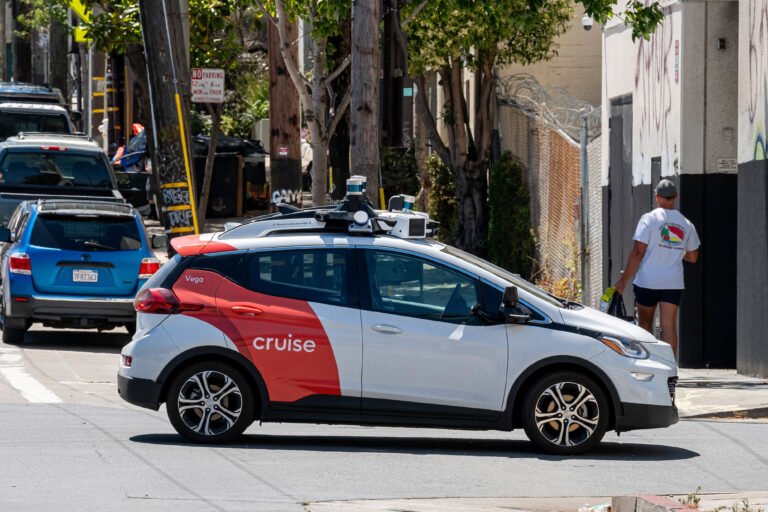The automotive industry in the United States has always been a key pillar of the nation’s economy. From Detroit’s manufacturing plants to the bustling car dealerships across the country, the business of buying and selling vehicles is deeply ingrained in American culture. However, the landscape of this industry is shifting, as new policies under President Donald Trump’s leadership, combined with evolving consumer preferences, are reshaping the future of car sales.
While many U.S. car dealers have expressed optimism about the state of the industry, particularly with the rebound of traditional gasoline-powered vehicles, there remains a significant concern: the future of electric vehicles (EVs). This contradiction between optimism for certain segments of the automotive market and wariness over EV sales highlights the complexities and uncertainties that currently define the U.S. auto industry.
The Resurgence of Traditional Car Sales Under Trump’s Influence
One of the major factors driving the current wave of optimism in U.S. dealerships is the influence of former President Donald Trump. Trump’s administration was known for its strong stance on economic nationalism and trade policies, which resonated with many in the American automotive sector.
Trump’s policies emphasized bringing jobs back to the U.S., encouraging domestic manufacturing, and taking a tougher stance on foreign competition, particularly from countries like China. His administration’s focus on protecting American industries from foreign imports was seen as beneficial for U.S. car manufacturers and dealerships, as it promised to keep car prices stable and secure jobs for American workers in the manufacturing and sales sectors.
During his tenure, Trump introduced various policies that were viewed favorably by car dealerships. These included tax cuts aimed at stimulating consumer spending and the push for a rollback of stringent emissions regulations, which had previously made it more difficult for carmakers to produce vehicles that were both affordable and efficient.
For many dealerships across the country, these measures created a more favorable business environment, with many seeing a boost in sales of traditional gasoline-powered vehicles. The outlook for American-made cars has improved, with consumers increasingly choosing these vehicles over their foreign counterparts due to both economic and political factors.
The Revival of Consumer Confidence in Car Buying
As the U.S. economy recovered from the setbacks of the COVID-19 pandemic, consumer confidence in the automobile market began to grow. Dealerships reported a surge in sales of trucks, SUVs, and traditional sedans, driven by lower interest rates and an improving job market. This resurgence in traditional car sales was further bolstered by Trump’s stance on trade tariffs, which raised the cost of imported vehicles and made domestically manufactured cars a more attractive option for American consumers.
For many dealerships, the post-pandemic recovery has brought much-needed stability. With pent-up demand for vehicles and government stimulus checks helping to drive consumer spending, dealerships across the U.S. saw a significant increase in foot traffic and sales in 2021 and beyond. While many dealers were initially concerned about the long-term impact of the pandemic, the resilience of the American consumer proved to be a strong counterforce to the downturn.
The Growing Concern Over Electric Vehicle Sales
Despite the overall positive outlook for car dealerships, there is one area where caution is growing: electric vehicles (EVs). While many automakers, including traditional giants like General Motors and Ford, have ramped up their production of electric vehicles, there is still uncertainty about how quickly these cars will be adopted by the broader American public.
Several factors contribute to this wariness. First, while the demand for electric vehicles is increasing, it remains a niche market compared to traditional cars. U.S. dealerships report that many consumers are still hesitant to embrace the shift toward electric vehicles, primarily due to concerns over range anxiety, charging infrastructure, and the higher upfront cost of EVs.
Furthermore, the lack of a comprehensive national charging network remains a significant barrier to EV adoption. In contrast to countries like China and several European nations, where charging stations are widespread and easy to access, the U.S. still faces a fragmented and often inadequate charging infrastructure. This issue is particularly problematic for consumers living in rural areas or those who do not have access to home charging facilities, as they worry about the practicality of owning an electric vehicle.
Additionally, the higher cost of EVs compared to traditional cars is a major deterrent for many consumers. While the cost of EVs has been gradually decreasing, they are still significantly more expensive than their gasoline-powered counterparts, making them less appealing to budget-conscious buyers. Despite the federal tax incentives available for purchasing electric vehicles, the initial purchase price remains a hurdle for many Americans, particularly those who are used to the relatively lower cost of traditional cars.
The Biden Administration’s Role in the EV Shift
The shift towards electric vehicles has also been influenced by the policies of the Biden administration, which has placed a strong emphasis on green energy and sustainability. President Joe Biden has set ambitious targets for EV adoption, with plans to have half of all new car sales in the U.S. be electric by 2030. To support this transition, the Biden administration has proposed various incentives for both consumers and manufacturers to promote the adoption of electric vehicles.
However, while these incentives are welcomed by some, they have also raised concerns among U.S. car dealerships, many of which are unsure about how quickly the market for EVs will mature. The push for electric vehicles is a significant change for the automotive industry, which has been heavily reliant on gasoline-powered cars for over a century. The rapid shift to EVs could result in challenges for dealerships that are not prepared to handle the unique needs of electric vehicle customers, such as providing access to charging infrastructure, maintenance services, and specialized knowledge about the technology behind EVs.
The Impact of Supply Chain Disruptions on the Auto Industry
Another issue that U.S. dealerships face is the ongoing supply chain disruptions that have affected industries around the world. The automotive industry has been hit particularly hard by shortages in key components like microchips, which are essential for modern vehicles. These shortages have led to delays in vehicle production and a lack of available inventory for dealerships, forcing many to raise prices and limit the availability of certain models.
For car dealerships, these supply chain issues have created a difficult situation. While the demand for vehicles remains strong, the inability to meet that demand with enough inventory has caused frustration among consumers and dealerships alike. Many dealers have turned to used car sales as a way to make up for the lack of new vehicles, but even the used car market has been affected by rising prices and limited availability.
The Future of the U.S. Car Dealership Market
Looking ahead, the future of the U.S. car dealership market is uncertain, but there are reasons for optimism. The recovery of traditional car sales, bolstered by Trump’s policies and the post-pandemic economic rebound, has provided a strong foundation for the industry. However, the shift toward electric vehicles presents both opportunities and challenges for dealerships.
To remain competitive, U.S. dealerships will need to adapt to the changing market dynamics by embracing new technologies, including EVs, and expanding their services to meet the needs of electric vehicle owners. Additionally, the development of a robust nationwide charging infrastructure will be crucial for driving the adoption of electric vehicles and ensuring that dealerships can support this transition.
At the same time, U.S. car dealerships will need to remain agile in the face of ongoing supply chain disruptions and rising costs. These challenges, combined with changing consumer preferences and regulatory pressures, will require dealerships to rethink their strategies and business models to remain profitable in an evolving market.
Conclusion: A Shifting Landscape for Car Dealerships in the U.S.
In conclusion, while the optimism among U.S. car dealers remains high, particularly in light of Trump’s policies and the recovery of traditional car sales, there are significant challenges ahead. The transition to electric vehicles, concerns over supply chain disruptions, and the evolving role of government incentives all present hurdles that need to be addressed in the coming years. Despite these challenges, the U.S. automotive industry remains one of the most resilient in the world, and with the right strategies and investments, it can continue to thrive in an ever-changing market.
The key to success in the future will lie in the ability of U.S. dealerships to adapt to new technologies, embrace the shift toward electric vehicles, and navigate the complex regulatory and economic landscape. With the right approach, U.S. car dealerships can continue to play a leading role in the global automotive market while meeting the needs of a new generation of consumers.





Leave a Comment